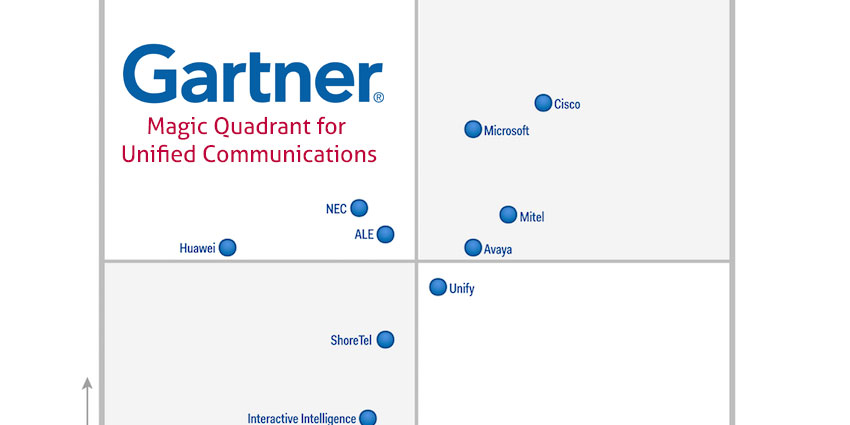The 14th annual Gartner Magic Quadrant for UC was published on July 13th, 2016. Since then, numerous bodies have considered the report and attempted to analyse it, so that they might better understand the evolving nature of the UC world.
From a basic perspective, the Magic Quadrant report is all about summarising the UC marketplace and the vendors within. In 2016, Gartner drew attention to the fact that the UC MQ is now a large on-premise UC report, with other mid-market UC solutions covered by separate reports. The 2016 MQ certainly outlines some clear messages about the nature of the market, and Gartner has commented that we can expect increased user services, more consolidation, and a further emphasis on vendor telephony capabilities as we move forward. In other words, the theme continues from 2015.
Gartner Defines the UC Marketplace
Gartner have continued their definition of UC as a solution for productivity and the enhancement of business processes. Both UniComm and UC Strategies have supported this definition for more than a decade. Additionally, as always, the Gartner MQ splits vendors into four quadrants, including:
- Leaders: Microsoft, Cisco, Avaya, and Mitel
- Challengers: ALE, Huawei, and NEC
- Visionaries: Unify
- Niche players: Interactive Intelligence and ShoreTel
While Cisco held its leading position in 2015, Microsoft declined slightly based on evolution in Office 365 Voice services. Avaya also declined slightly in their ability to execute, but remained within the Leader’s quadrant. Unify made the move from Niche to Visionary, and ShoreTel moved in the opposite direction, while Huawei advanced into “Challenger” based on their strong UC portfolio. IBM have left the UC MQ entirely based on their shifting emphasis in work stream collaboration, and allothers remained essentially the same from 2015.

What Does Gartner Tell Us about UC and Telephony?
According to Gartner, the increasing expectations of customers has prompted an emphasis on vendor telephony capabilities. However, many experts suggest that email and IM are becoming more important, alongside the use of workflow and work stream software. Companies like UCStrategies suggest that the leaders in work stream collaboration will not be sourced from this vendor list – except for perhaps the Microsoft blend of Office 365 and dynamics. Instead, there’s some suggestion that the leaders are likely to be Salesforce, Slack, IBM, and others.
Gartner have also pointed out that integrating both hybrid and cloud UC services could be an important factor as these solutions mature. While this is true, it also may understate the disruption that is in the works. Of the 20 vendors in the 2015 UCaaS MQ, only three of them are also in this 2016 UC MQ – Mitel, Microsoft, and ShoreTel. What’s more, none of those are in the UCaaS leader’s quadrant.
Gartner has also noted that communications platforms as a service is an increasingly important option for partners who wish to develop their digital business initiatives. However, similarly to work stream collaboration cases, the market for platforms of communications is developing independently from the UC vendor list. While some UC vendors are re-branding and repackaging their development and integration suites, there hasn’t been much evidence that the UC in enterprise departments are making themselves known as the cPaaS of choice.
Financial Suitability for Long-Term Partnerships
In the MQ report, Gartner emphasises the financial suitability of UC vendors. However, the necessary data is difficult to understand. Half of the vendor financial information is buried within parent companies results, and in this case, it’s important to know the overall corporate strategies when attempting to determine viability. Gartner raises cautions for ALE, Avaya, and Mitel, but doesn’t comment on Interactive Intelligence or ShoreTel financials. However, SHOR and ININ are public companies, and it’s easy to see that they’re operating at break-levels within the range of $400M per year.
In simple terms, it seems that financial viability isn’t certain for any of the UC Vendors.
Gartner has also placed significant emphasis on the UX as a vehicle for integrating communication services. While this is important, it’s worth noting that work stream communications and CEBP is likely to be where the greatest value is for business processes and user productivity. Rather, the UX will be likely driven by the business process or workflow software packages that emerge, rather than by a UC vendor software client.
Related:
UCaaS Maturing as Global Deployments Increase
A Brief Look at the Gartner ‘s 2016 Contact Centre Magic Quadrant







